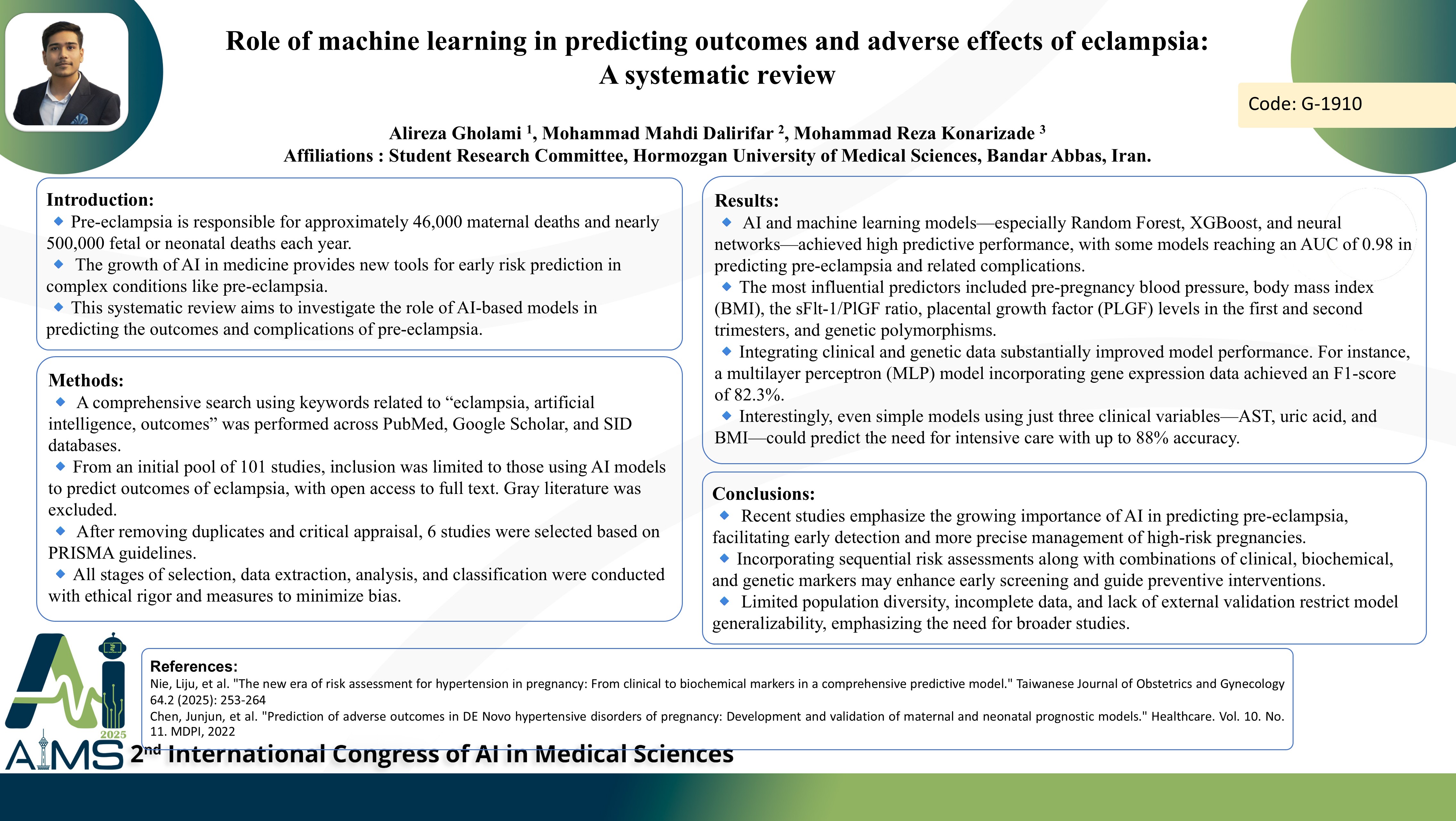Role of machine learning in predicting outcomes and adverse effects of eclampsia: A systematic review
Code: G-1910
Authors: Alireza Gholami *, Mohammad Mahdi Dalirifar ℗, Mohammadreza Konarizadeh
Schedule: Not Scheduled!
Tag: Intelligent Virtual Assistant
Download: Download Poster
Abstract:
Abstract
Background and aims: There are approximately 46,000 maternal deaths due to pre-eclampsia and approximately 500,000 fetal or neonatal deaths annually. The dramatic growth of artificial intelligence models and their use in medical science can be helpful in predicting the complications of preeclampsia. The aim of this study is to investigate artificial intelligence in predicting the outcomes and side effects of pre-eclampsia. Method: In this systematic review, an extensive search was conducted with keywords related to “eclampsia, artificial intelligence, outcomes” in the international databases PubMed/Medline, Google Scholar search engine, and SID database. In the initial search, "101" studies were obtained. The inclusion criteria were "studies in which artificial intelligence models were used to predict the outcomes of eclampsia" and open access to the full text of the article. Gray literature was excluded. After removing duplicates and criticizing with relevant tools, “6” studies were finally analyzed. Ethical considerations, lack of bias in the stages of selection, extraction, analysis, and classification of evidence were observed, and the abstract was reported according to PRISMA. Results: The results of this study showed that artificial intelligence and machine learning models, especially Random Forest, XGBoost, and neural networks, performed well in predicting preeclampsia and its outcomes (AUC up to 0.98). The most important input measures included pre-pregnancy blood pressure and BMI, sFlt-1/PlGF ratio, PLGF levels in the first and second trimesters, and genetic polymorphism. Combining clinical and genetic data significantly increased the accuracy of the models (MLP model with gene expression data had an F1-score of 82.3%). Also, simple models with only three variables (AST, uric acid, BMI) were able to predict the need for intensive care with an accuracy of 88%. Conclusion: Recent studies have highlighted the importance of machine learning models in predicting preeclampsia. New and novel approaches, including unbiased models, sequential risk assessment, and combinations of clinical and biochemical markers for early screening of at-risk patients, may enable preventive interventions and improve maternal and neonatal outcomes. However, limitations like fixed populations, incomplete data, and limited model applicability in diverse populations require further investigation and independent validation.
Keywords
Eclampsia, Artificial intelligence ,Machine learning, Outcomes
